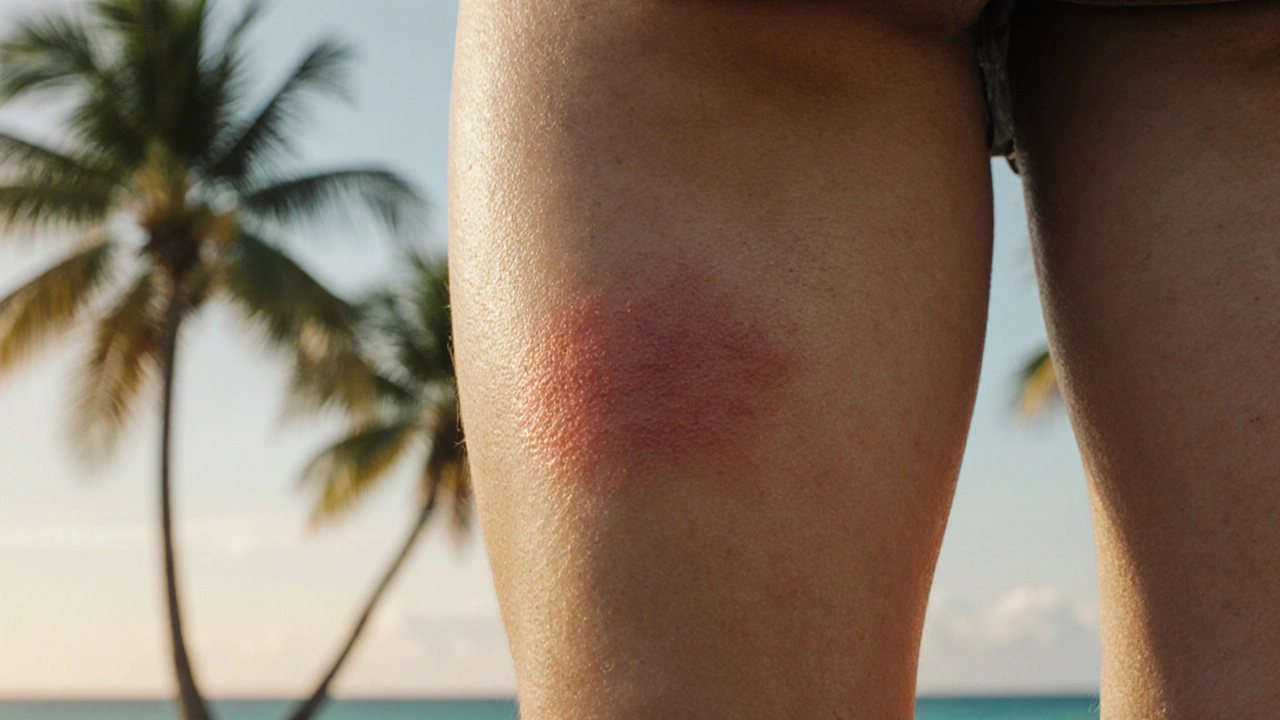You've probably heard the word "candidiasis" linked to oral thrush or vaginal yeast infections. When the same fungus lands on the skin, you get cutaneous candidiasis. It’s a yeast infection that loves warm, moist spots – think skin folds, under a diaper, or sweaty areas after a workout.
Cutaneous candidiasis is caused by Candida species, most often Candida albicans. The fungus lives harmlessly on most of us, but when the skin's barrier is broken or the environment is right, it multiplies and causes irritation. Typical signs include red patches, itching, burning, and sometimes a white, soggy coating that looks a bit like milk. The rash may spread outward in a ring‑shaped pattern, and it often shows up in skin folds – groin, under the breasts, between toes, or around the diaper area in babies.
Factors that tip the balance toward infection are simple: excess moisture, friction, antibiotic use, diabetes, weakened immunity, or tight clothing. If you notice a persistent rash that worsens after sweating or a shower, think candidiasis.
The good news is most cases clear up with over‑the‑counter (OTC) antifungal creams like clotrimazole or miconazole. Apply a thin layer twice a day for at least a week, even if symptoms fade sooner. For more extensive or stubborn rashes, a doctor may prescribe a stronger topical or an oral antifungal such as fluconazole.
While medication tackles the fungus, everyday habits stop it from coming back. Keep affected areas clean and dry – pat skin dry instead of rubbing. Use breathable fabrics, change out of wet clothes promptly, and consider a talc‑free powder to absorb moisture.
If you have diabetes or another condition that affects blood sugar, maintain good control; high glucose feeds Candida. Also, avoid harsh soaps or scented wipes that can strip the skin’s natural oils, making it easier for the fungus to invade.
For babies, change diapers frequently, let the skin air out, and apply a thin barrier cream (like zinc oxide) to protect against moisture. Adults can use similar barrier creams on folds that stay damp.
When to see a doctor? If the rash spreads quickly, is painful, shows signs of infection (pus, fever), or doesn’t improve after two weeks of OTC treatment. Persistent or recurring infections may signal an underlying health issue that needs attention.
Bottom line: cutaneous candidiasis is common, treatable, and mostly preventable with simple skin care steps. Spot the signs early, apply the right antifungal, keep the area dry, and you’ll be on the road to clear skin again.

Learn practical, science‑backed steps to stop skin yeast infections in hot, humid climates, covering hygiene, clothing, diet, home environment, and when to see a doctor.
read more